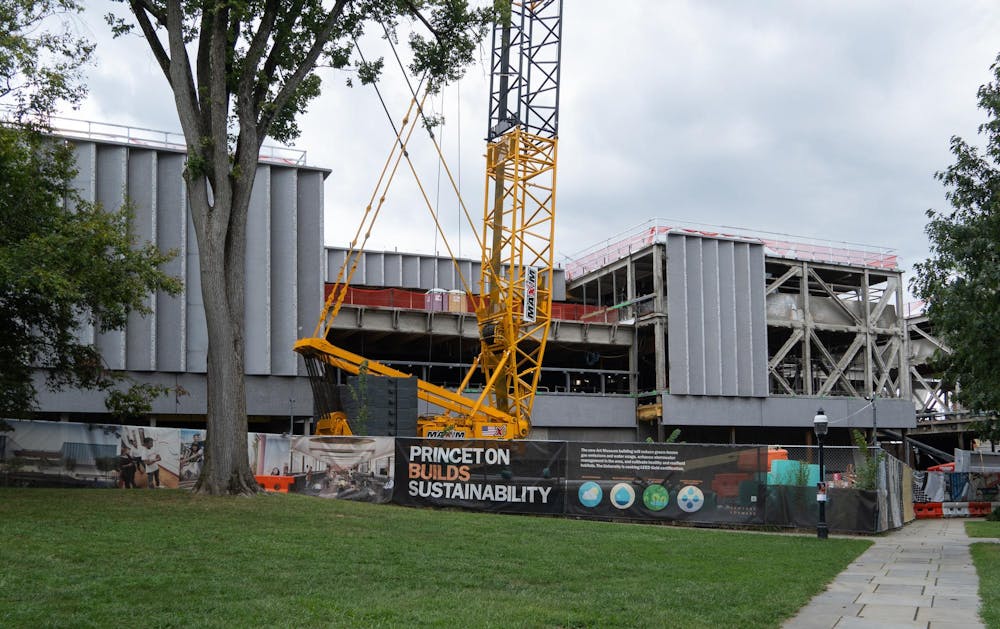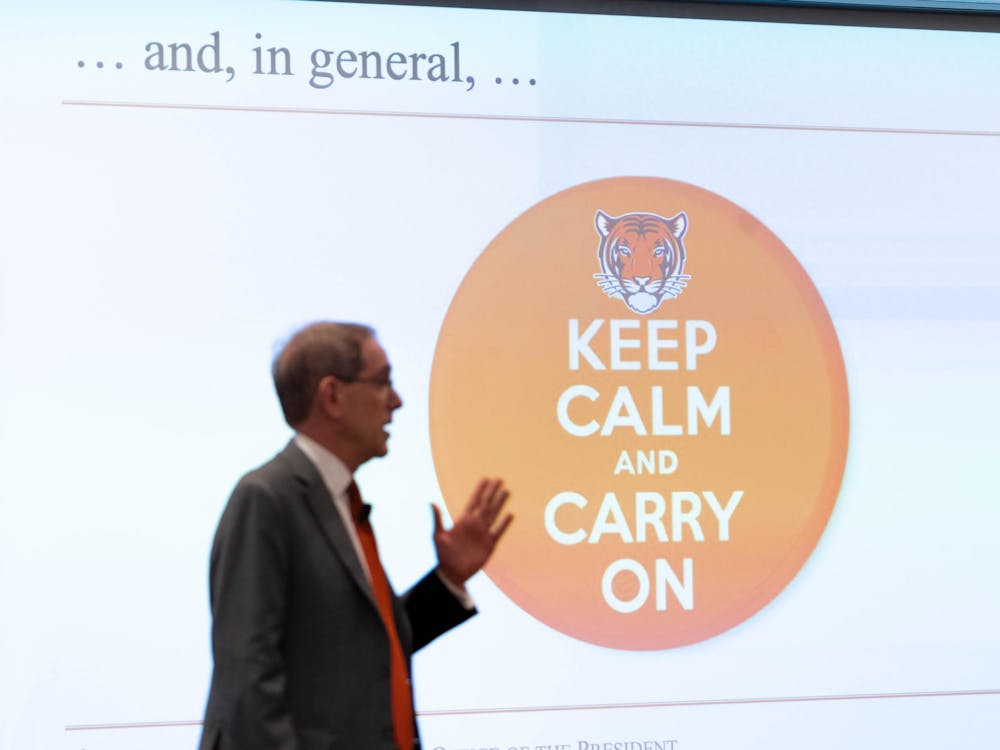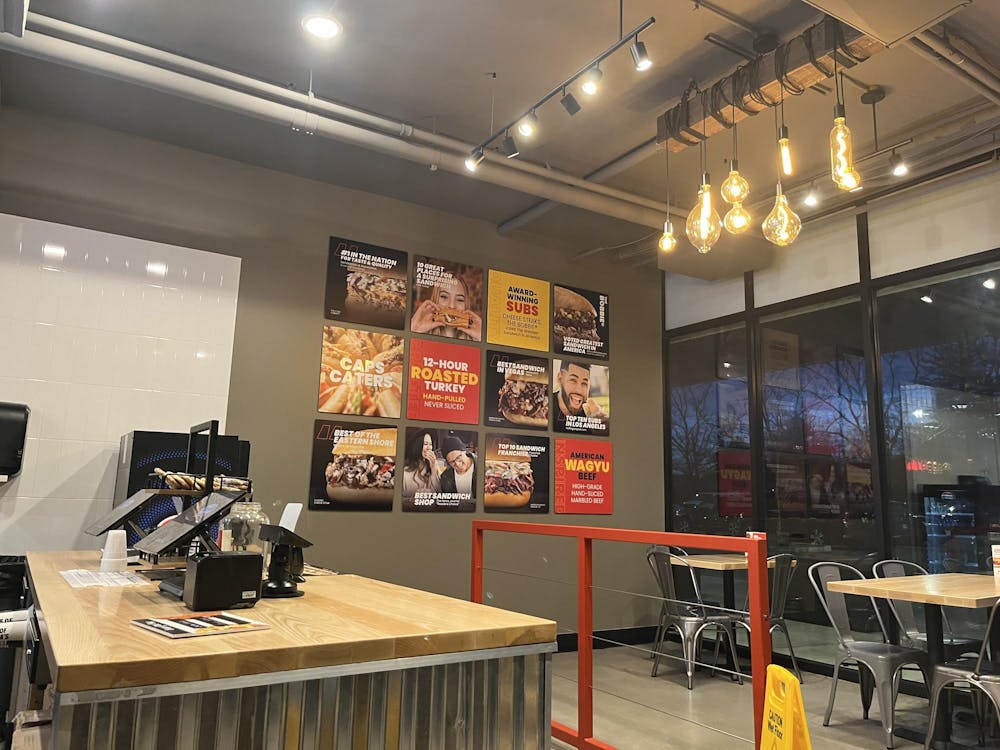Recently published provenance records from the Princeton University Art Museum have linked 16 additional artifacts in its collections to accused art smuggler Edoardo Almagià ’73.
As with previously reported items linked to Almagià at the Art Museum, the 16 objects all have origins in the Mediterranean. They include an Etruscan funeral urn from the eighth century B.C.E., a ceramic flask from the island of Rhodes, and a painted Athenian amphora, as well as six large fragments of Roman lead sarcophagi.
The Art Museum acquired the artifacts from Almagià between 1987 and 2001, with six being direct purchases. The rest were gifts, sometimes from prominent figures in the art world, including Joyce von Bothmer, the wife of famed Metropolitan Museum of Art MET curator Dietrich von Bothmer, and J. Michael Padgett, the former curator of ancient art at the Art Museum.
Since August 2023, the number of publicly available provenance records at the Museum has increased “as part of an ongoing collection-wide provenance effort,“ according to University Spokesperson Michael Hotchkiss. "In the current effort, provenance information is being drawn from existing Princeton University Art Museum objects," Hotchkiss added.
The original credit lines of the objects, published at the time of their acquisition, do not disclose their relation to Almagià, who first caught the eye of authorities in 1992 for connections to well-known tombarolo (“grave robber”) Pietro Casasanta, according to a 2021 New York grand jury report. The report also details smuggling activity by Almagià going back to 1987, when he arranged for the "looting" of an archeological site near Rome and sold the stolen objects to a New York antiquities gallery. American authorities later seized two dozen of the artifacts and returned them to Italy.
In 2006, Almagià was charged in Italy for illegal trafficking and exports, but the prosecution was dropped due to a statute of limitations. Most recently, the Manhattan District Attorney seized six pieces of art linked to him from the Art Museum in April.
Matthew Bogdanos is the head of the Manhattan District Attorney’s Antiquities Trafficking Unit. “If Almagià is the first name on your provenance, it is stolen,” he told the Princeton Alumni Weekly in September.
After the seizure of artifacts linked to him at the University Art Museum in April, The Daily Princetonian sat down with Almagià. When asked if he transported objects between Italy and the U.S., Almagià told the ‘Prince,’ “I never moved anything. If it was moved, it was moved by someone else.”
PAW has reported that Almagià did not ask about most objects' provenance when he purchased them.
“What is absolutely a sickness is that you start applying things that have come up today to a market of 20, 30, 40 years ago,” he told PAW in a piece this fall.
According to Art Museum Manager of Marketing and Public Relations Morgan Gengo, the museum has added provenance records for around 17,000 objects since August 2023.

“As and when we make new discoveries about the objects in our care, or new information is brought to our attention, we act accordingly and proactively to ensure that objects are in the hands of their rightful owners, whether Princeton or another party,” Gengo wrote in a statement to The Daily Princetonian.
Provenance standards have also shifted in the last several decades, according to members of Art Museum staff, Chris Newth and Carolyn Laferrière.
“Broadly in the field, there’s an important corrective happening where we are absolutely committed to maintaining these legal, and also, ethical considerations in terms of our collection,” Laferrière, a curator of ancient Mediterranean art, said in an interview with the ‘Prince.’
But determining an object’s provenance after the fact is often challenging. Newth, an administrator overseeing curatorial practices, described the importance of asking questions and gathering records at the time of an object’s acquisition. “That’s one of the steps that’s hard to recreate,” he said in a Zoom interview with the ‘Prince.’ “Sometimes these are easy questions, and sometimes they could be someone’s lifetime.”
Then there are other difficulties, like missing records or the fact that two artifacts might simply look similar. “There were molds, for instance, that could have been used to make small bronze objects or small terracotta objects. When they are made en masse, it’s hard to track sometimes which is the exact object,” Laferrière said. “With a vase, you’ll get repetition of certain scenes or certain shapes, and so it all makes it really tricky.”
According to Laferrière, the Art Museum is also in the process of hiring a dedicated provenance researcher.
“As caretakers of these objects, it’s our responsibility to know about their histories, because that might determine how we care for it, what sort of conservation interventions we could do, or what kinds of stories we can tell about them,” she said.
A number of artifacts from the Art Museum have been returned to Italy in the past, either voluntarily or through the Manhattan District Attorney’s Office. In September, authorities announced the repatriation of ten University artifacts that had been seized in an earlier search warrant, including six loaned by Almagià. In 2007, the University agreed to return eight allegedly looted objects (none of them linked to Almagià).
According to the grand jury report, “it appears from all of the evidence that Almagià was surprisingly candid with his clientele about his black-market supply of looted antiquities,” it reads, citing letters he wrote to buyers describing illegal excavations and the transport of artifacts.
In an interview with the ‘Prince’ in April, Almagià described the University’s acquisition process as “pretty straightforward.”
“They would see the object, and if they thought it was interesting for the museum, they would buy it, and that’s it,” he said.
Miriam Waldvogel is an associate News editor for the ‘Prince.’
Please send any corrections to corrections[at]dailyprincetonian.com.
Correction: A previous version of this article included a headline identifying Almagià as an art smuggler. Amalgià has been previously charged, but not convicted, of illegal trafficking.
Editor’s Note: The piece has been edited post-publication to reflect comment Almagià previously gave to the Princeton Alumni Weekly and The Daily Princetonian regarding previous artifacts linked to the University Art Museum. Additionally, the story has been updated to include a statement from the University clarifying the Museum's provenance efforts.








